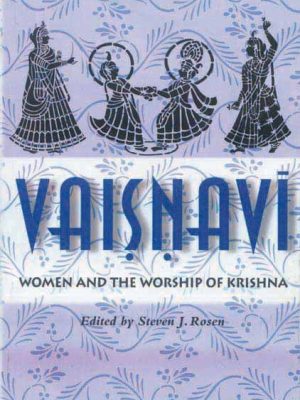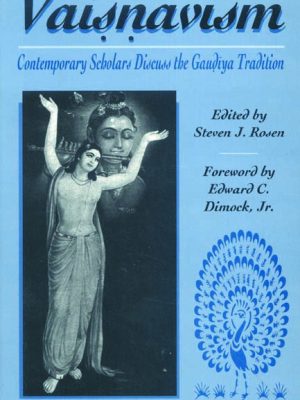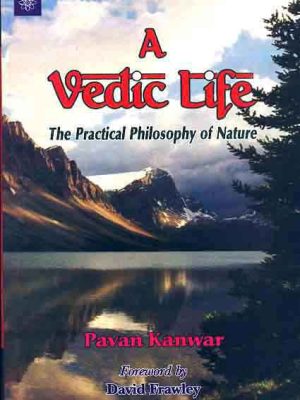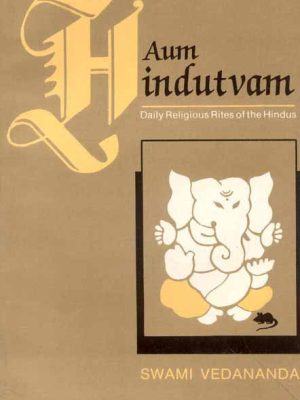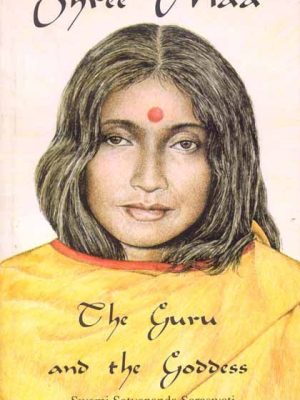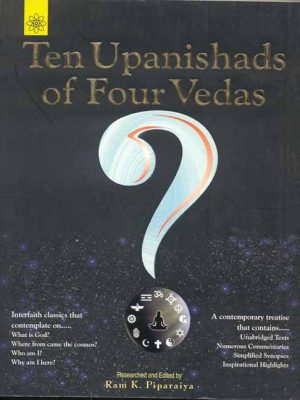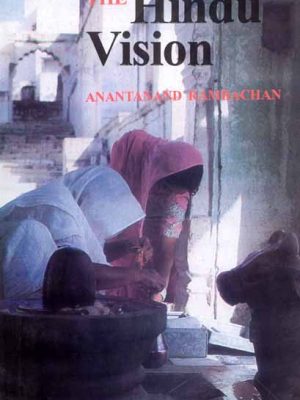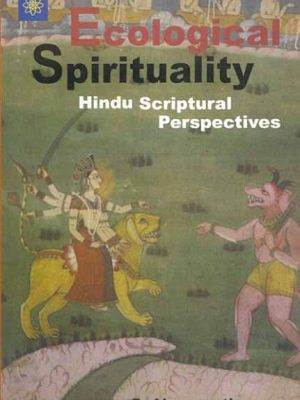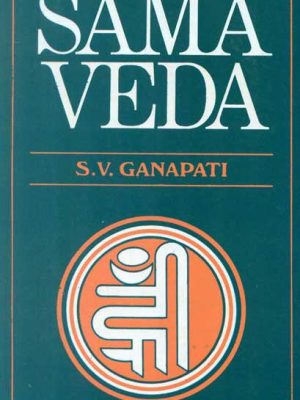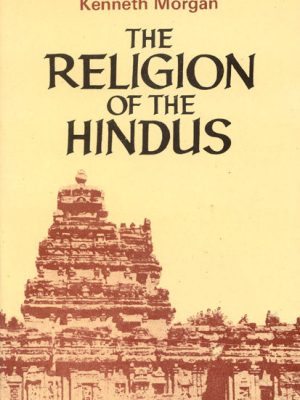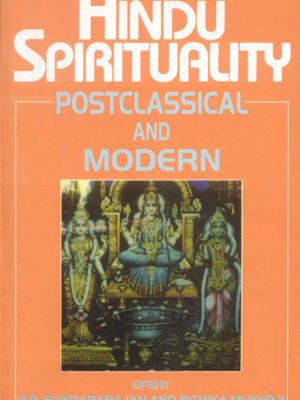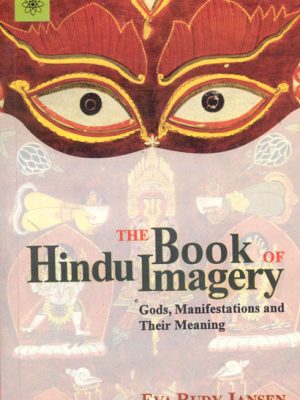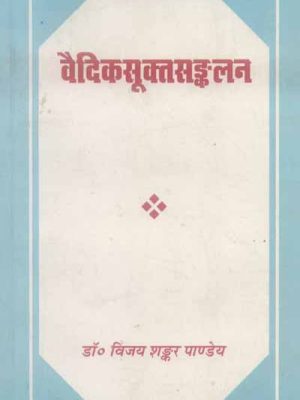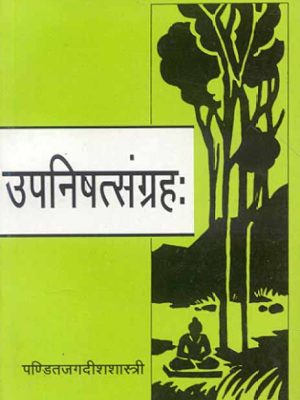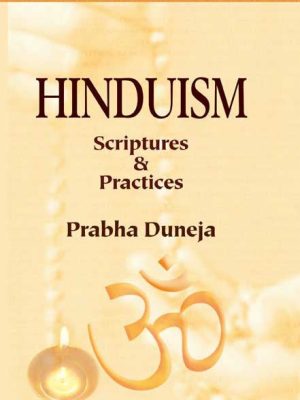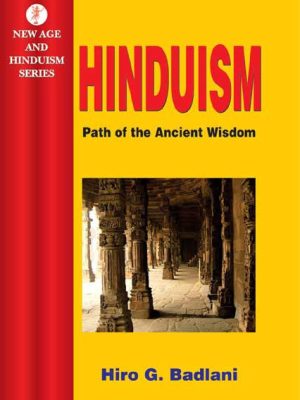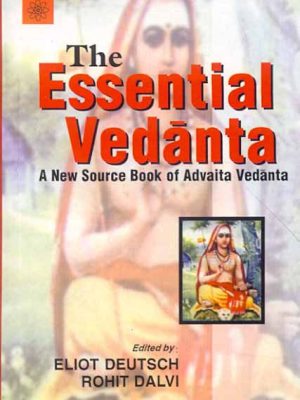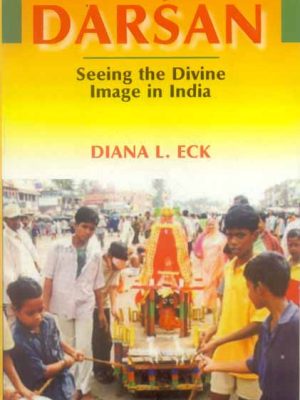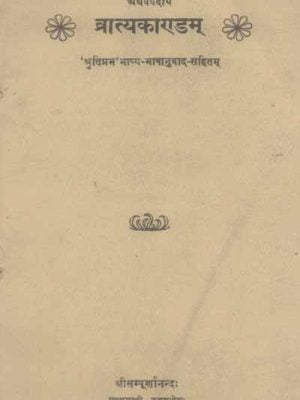Hinduism
-
Vaisnavi: Women and the Worship of Krishna
Vaisnavi: Women and the Worship of Krishna
This collection tackles the sensitive topic of gender roles in religious traditions with openness and transparency, with a particular emphasis on Vaishnavism, one of the oldest and most textually-rich religious traditions practised by humans. Steven J. Rosen has compiled a collection of eight articles written by prominent scholars, poets, and practitioners. These individuals offer light on the lives and teachings of certain female saints over the course of history. This book also discusses fundamental ideas pertaining to the worship of Krishna and how such principles effect both men’s and women’s lives in today’s society.
About
Steven Rosen
₹525.00 -
Vaisnavism: Contemporary Scholars Discuss the Gaudiya Tradition
Vaisnavism: Contemporary Scholars Discuss the Gaudiya Tradition
The topic of discussion in Vaisnavism: Contemporary Scholars Discuss the Gaudiya Tradition is an old religious tradition as seen through the lens of current study. Steven J. Rosen and twenty-five eminent scholars examine the different facets of Gaudiya via a series of stimulating debates in this book. VAisnavism—its
literature, historical progression, theological analysis, and religious practise. As the researchers share the knowledge they’ve acquired over the course of their years of study, thoughtful and, indeed, fascinating viewpoints emerge. This ancient East Indian tradition is brought to light through exploring topics such as the nature of the Absolute, devotional poetry, holy space, mystical states, and sound theology. These topics bring to light the rich beauty and profoundness of this tradition.
₹495.00 -
A Vedic Life: The Practical Philosophy of Nature
A Vedic Life: The Practical Philosophy of Nature
In Sanskrit, the word veda refers to knowledge, and the ancient tradition known as the Vedic tradition is linked with India and focuses primarily on knowledge. It is not about any one kind of information, but rather about knowledge in general as a tool for comprehending and experiencing reality. As a result, it is a tradition that does not restrict itself to one one system. Instead, it takes a perspective that is open and inclusive, and it believes that a reasonable approach is very necessary. However, it does not restrict itself to logic alone; rather, it also examines an approach that is focused on inner perception, since this is a vital aspect of both our knowledge and our experience of reality. The book titled “A Vedic Life” is a presentation that outlines some of the most significant aspects of the Vedic method of approaching information. It does this not for any specific religious or sectarian motive, but rather for the sake of knowledge, as indicated above, and as a result, it is anticipated that it will be able to contribute something to a range of opinions. Although the Vedas (books of wisdom) are intimately connected with the Vedic approach to knowledge because they exemplify its open and inclusive approach to information, the Vedic approach to knowledge is not limited to any one individual or book, as was previously noted. This aspect of the Vedic writings is expressed in a phrase from the Rig Veda, one of the core Vedic books, which states that “reality is one, but the knowledgeable call it by numerous names.”
The Vedic tradition is not the only one that has an open attitude toward knowledge; nonetheless, it is perhaps the most in-depth and oldest system of its kind. It is also the best maintained, despite the fact that a significant amount of its knowledge has been lost in modern times. Despite the fact that many of its pioneering philosophers had a completely different perspective, the system of contemporary science obviously clearly strives to the same ends; nevertheless, it does not truly recognise any other kind of thought than that which is founded on reason and sensory evidence. This book will examine the benefits and drawbacks of the methodology that is being used by contemporary science, particularly in light of the Vedic methodology for doing scientific research.
Because Sanskrit being the primary language used throughout the Vedic period, the book makes extensive use of Sanskrit words and phrases throughout its content. Once again, this is not due to any kind of ceremonial purpose; rather, it is due to the fact that the Sanskrit language used in the Vedas has a very well developed vocabulary in relation to psychology and philosophy. In addition, an effort will be made to show that Sanskrit is a natural language for the purpose of acquiring information, and this effort will be documented.
₹225.00 -
Aum Hindutvam: Daily Religious Rites of the Hindus
Aum Hindutvam: Daily Religious Rites of the Hindus
The author negates some of the very old concepts, viz., that females and
Shudras, and people who have not undergone the Upanayana Samskaras have no
access to Vedas or they should not perform Vedic rituals. He insists that
‘all religious observances of a man, if devoid of right conduct, are of no
avail. Right conduct constitutes an important element of education and
civilization. In his opinion Hindus will have to develop the
all-comprehensive idea of Hindu Dharma in and through their lives and
activities. Their welfare lies in the Vedic prayers and practices.
Those who are interested in Hindu Dharma, and those who want to know about
its rituals will find the present work indispensable. The author deals with
the religious practices, observances and rituals. When, how, and where
certain rituals are to be performed, is clearly discussed. Benefits of
Divine Communion are given special emphasis.
About the Author(s)
SWAMI VEDANANDA
₹195.00 -
Sri Maa the Guru and the Goddess
Sri Maa the Guru and the Goddess
There are three books included in The Guru and the Goddess that may be used for study and practise (sadhana). The first one is a translation of the Kasyapa Sutras along with a commentary on them. The second portion contains a Sanskrit text of the Guru Gita as well as a translation of it. The Lalita Trisati Stotram is presented in its original Sanskrit form and then translated into English in the third portion.
About the Author(s)
Swami Satyananda
₹465.00Sri Maa the Guru and the Goddess
₹465.00 -
Ten Upanishads Of Four Vedas
Ten Upanishads Of Four Vedas
Ten Upanishads Of Four Vedas,Ram K.Piparaiya: A modern treatise that includes whole texts, extensive commentaries, condensed summaries, and pivotal points of inspiration. This book is a valuable compilation of the original Upanishadic writings as well as commentaries on those works. Classic works from a variety of faiths that provoke thought on. Who is God, exactly? Where did everything in the universe come from? Just who am I? Why am I in this place?
The Upanishads provide a chronicle of the human mind’s early voyages into the realm of the unknown via contemplation.
At the very least, a few centuries separated many of the nameless searchers from famous teachers and prophets such as Lao-Tzu, Confucius, Socrates, Zoroaster, Buddha, Mahavira, Abraham, and Jesus. Among the anonymous seekers were those who came before them.
In the Upanishads, the link between man, God, and the universe is illustrated via a variety of intriguing tales and metaphors.
Aphorisms are short sayings that pack a lot of wisdom into a little amount of space.
The sheer sight of Upanishads texts on a bookshelf is enough to evoke contemplation of wisdom after just a few moments of reading them.
About the Author(s)
Shri Ram Piparaiya
₹2,000.00Ten Upanishads Of Four Vedas
₹2,000.00 -
The Hindu Vision
The Hindu Vision
This is a discerning and lucid articulation of Hindu belief and practice. Professor Rambachan combines insight born out of his own devotion with mastery of relevant texts and traditions to create a gem of a book. He describes worship in its familial and temple contexts, holding before the reader the aim of worship as unbroken awareness of God in all of life. This awareness intensifies and expands the religious and moral meaning of life, death, and human action, Dharma, moksa and rebirth, and other classical Hindu teachings, are set forth with an elegance of style and economy of words. Rambachan is especially attentive to common misunderstandings of Hindu teachings. He shows how Hinduism avoids determinism, encourages freedom from ignorance and for joyful celebration of life, and issues forth in compassionate concern for others. The final chapter, ‘A Hindu Looks at Jesus’, will be of special value for Hindu-Christian dialogue. It is difficult to imagine a more accessible, concise and helpful introduction to the profound themes of Hinduism.
About the Author(s)
ANANTANAND RAMBACHAN
₹100.00The Hindu Vision
₹100.00 -
Ecological Spirituality: Hindu Scriptural Perspectives
Ecological Spirituality: Hindu Scriptural Perspectives
Every major step man takes wreaks its own damage on the environment. Aware of this, man is yet unwilling to forgo the immediate material benefits his actions give. for all his professions of concern aabout the environment, in reality his concern reduces to nothing more than cosmetic changes in the exterior which are of no value. This celender monograph is critique on this pervasive culture of ambivalence. The author resorts to the first principles, Sanatana Dharmawhich literally means eternal order. Not environmental engineering but ecological spirituality is the answer. In Fact this is the only religion the world needs.
About the Author(s)
G. Naganathan
₹200.00 -
Sama Veda
Sama Veda
It is said that the Vedas have existed from the beginning of time and are thought to be a revelation of heavenly knowledge given to rsis in ancient times. Before they were put to writing in very recent times, the four Vedas were passed down to us orally over a period of thousands of years, without any inaccuracy of even a word. The Sama Veda is one of the Vedas, and it was the last of the four Vedas to be written down. The length of each of the Vedas varies, as does the total number of mantras or hymns included inside them. The whole Sama Veda text written in Nagari script has been included in this book together with an English translation and some comments written in a fresh perspective. The book includes, in addition to the text itself, an extensive and critical introduction that provides readers, both researchers and students interested in this topic, with specific information that is valuable for them.
Author
S. V. Ganapati
₹795.00Sama Veda
₹795.00 -
-
Hindu Spirituality (Vol. 2): Postclassical and Modern
Hindu Spirituality (Vol. 2): Postclassical and Modern
The term hindu is referred to the religious life of the people of India, and Spirituality understood as wisdom about the way back into the ground of pluralism of religious forms. These two volumes are strucrtured along the division between the classical and the postclassical. Twenty seven scholars from around the world shed light on the spiritual beauty of Hinduisms poetry art and temples, festivals and music, as well as the contributions of modern pioneers such as Swami Vivekananda Sri Aurobindo, Mahatma Gandhi and others.
About the Author(s)
K.R. Sundararajan
₹595.00 -
The Book of Hindu Imagery: Gods and Their Symbols
The Book of Hindu Imagery: Gods and Their Symbols
Hinduism is more than a religion; it is a way of ife that has developed over approximately 5 milennia. Its rich and multicultured history, which has no equivalent among the great religions of the world, has made the structure of its mythical and philosophical principles into a highly
differentiated maze, of which total knowledge is a practical impossibility.
This volume cannot offer a complete survey of the meaning of Hinduism, but Eva Rudy Jansen does provide an extensive compilation of important deities and their divine manifestations, so that modern students can understand the significance of the Hindu pantheon.
To facilitate easy recognition, a survey of ritual gestures, postures, attires and attributes as well as an index are included. Over 100 illustrations and several photographs make this book an important
reference, both to the student of Hindu art and the interested amateur.
About the Author(s)
EVA RUDY JANSEN
₹295.00 -
-
Upanishad Sangrah: (188 Upanishdon ka Sangrah)
Upanishad Sangrah:(188 Upanishdon ka Sangrah)
The publication gives an exhaustive account of the development of Sanskrit literature in a format that is concise and condensed. It encompasses a broad study of many forms of literature, including the Vedas, Epics, Puranas, Classics, and Philosophy. It gives insight on the life and philosophy of Ancient and Medieval India as reflected in the literary products of those times in India’s history. [Citation needed] It offers knowledge that is not only fascinating but also instructional, and it does so via the short epitome that is provided in the appendix on technical literature, which includes law, science, and the arts. The bibliographical notes and index that are given at the very end contribute to the worth of the work and make it as helpful as possible to the reader. Even in this day and age of highly developed history, when even the exceptional investigations of prominent antiquarians have become obsolete, the usefulness of this relatively short piece of work has not lessened in any way despite the passage of three quarters of a century.
About the Author(s)
Pandit Jagdish Shastri
₹995.00 -
Hinduism: Scriptures and Practices
Hinduism: Scriptures and Practices
In this book the author has sincerely endeavored to give an introduction to the study of the
Hindu religion both in its theoretical as well as practical aspects. Beginning from an introduction
to the Holy Vedas, Upanishads, and Manusmriti, through the great epics – the Ramayana and
Geeta – the Hindu gods and goddesses, festivals and the customs of our rich cultural heritage, she
has tried to cover a wide spectrum of subjects to the interest of the younger generation, from a new and contemporary way of life. The short and succinct summary of the Vedic rites and rituals,
Patanjali Ashtanga Yoga and meditation makes the
book more faithful to its subject.
The Vedic religious practices have been created and supported by some spiritual concepts and loyalty to the perseverance of these traditions has been emphasized over centuries. The entire
social structure in Hindu society is centered in religious beliefs, followed by Hindu families through the ages. The contents of all the essays are intended to add depth to the clear understanding of time-honored spiritual traditions that form the significant features of Hindu culture. Each topic offers valuable insights into the systematic exploration of the subject.
₹400.00 -
Hinduism: Path of the Ancient Wisdom
Hinduism: Path of the Ancient Wisdom
Hinduism is the oldest surviving religion in the world. It has evolved from prehistoric times through various phases of ongoing development and includes religious and spiritual literature which is vast and diverse. This book provides a well groomed summary of all aspects of Hinduism in a simple and straightforward language. It includes 63 chapters spread over 367 pages. Chapters 1 through 18 discuss the origin of Hinduism and its scriptures, Hindu spirituality, Hindu code of conduct, soul consciousness, the divine path of virtue, and Hindu Trinity. Chapters 19 through 42 include topics such as teachings of Ramayana, Mahabharata, Bhagavad Gita, ancient philosophy of Yoga, Buddhism, Jainism, Sikhism, teachings of Bhagavatam and spiritual teachings of some of the popular Hindu saints such as Vivekananda, Paramahansa Yogananda, Swami Chinmayananda and many other spiritual masters. Chapters 43 through 56 provide discussions on Hinduism and science, meditation, satsanga (holy company), Ayurveda, vegetarianism, Hindu wedding, Hindu symbols and icons, Hindu customs, festivals, interfaith issues and Hinduism and fine arts. The remaining chapters 57 through 63 include discussions on evolution of Hindu temples, a pilgrimage through India, Hindu temples in USA and rest of the world, and Hindu prayers.
Message from Baba Hari Dass, Mount Madonna, Santa Cruz, California. ‘Hinduism: Path of the Ancient Wisdom’ gives the ancient history of Hinduism. The book is like a map of Hinduism, which shows from where one should start his or her spiritual journey, and where the journey ends. This is also a guidebook to those who don’t know what Hinduism is, especially for those Hindus who are settled in foreign countries and have no knowledge of their own religion.
Writing this book has been like playing the second inning of my life. The first inning was my medical career of over forty years in Mumbai, India. After retiring, my wife and I set up base in the United States. It was then that a friend gave me a book titled The Essentials of Hinduism by the learned Swami Bhaskarananda of Seattle, Washington. The book fascinated me so much that I read it many times and later developed a close relationship with the author. I resumed a childhood habit of reading extensively, but this time, my reading was not for just any book; rather, it was exclusively for works on Hinduism. There was an urge to explore and search the deeper meaning embedded in the Hindu faith.
₹450.00 -
The Essential Vedanta: A New Source book of Advaita Vedanta
The Essential Vedanta: A New Source book of Advaita Vedanta
The Essential Vedanta is a comprehensive introduction to the tradition of Advaita Vedanta based upon primary sources and makes possible a study of it in its classical form. Translations from all major sanskrit writings are included as well as selections from all of the most important representatives of this central philosophy of India.
About the Author(s)
Rohit Dalvi
₹450.00 -
Darsan
Darsan
The experience of the divine in India merges the three components of sight, performance, and sound. This book is about the power and importance of “seeing” in the Hindu religious tradition. In the Hindu view, not only must the gods keep their eyes open, but so must we, in order to make contact with them, to reap their blessings, and to know their secrets. When Hindus go to temple, their eyes meet the powerful, eternal gaze of the eyes of God. It is called Darsan, “Seeing” the divine image, and it is the single most common and significant element of Hindu worship. This book explores what darsan means. This is also a book about the divine image in the Hindu tradition. What do Hindus see in the images of the gods? What is meant by these multi-armed gods, with their various weapons, emblems, and animals? How are these images made and consecreted? How are they treated in a ritual context? In exploring the nature of the divine image, this book not only considers the images of the gods, but also the Hindu temple and the Hindu place of pilgrimage.
Author
DIANA L. ECK
₹295.00Darsan
₹295.00 -
Kathopanishad (Pratham Bhag): Shankar Bhashya [Bhumika, Anvaya, Hindi Anuvad, “Vandna” Vyakhya aur Tippani Sahit
Kathopanishad (Pratham Bhag): Shankar Bhashya [Bhumika, Anvaya, Hindi Anuvad, “Vandna” Vyakhya aur Tippani Sahit
Author
Baijnath Pandey
₹100.00 -
Vratyakanda-Atharvaveda: Sanskrit-Hindi Vyakhya
Vratyakanda-Atharvaveda: Sanskrit-Hindi Vyakhya
Vratyakanda-Atharvaveda: Sanskrit-Hindi Vyakhya
Author
VISHWANATH VIDYALANKAR
₹495.00
